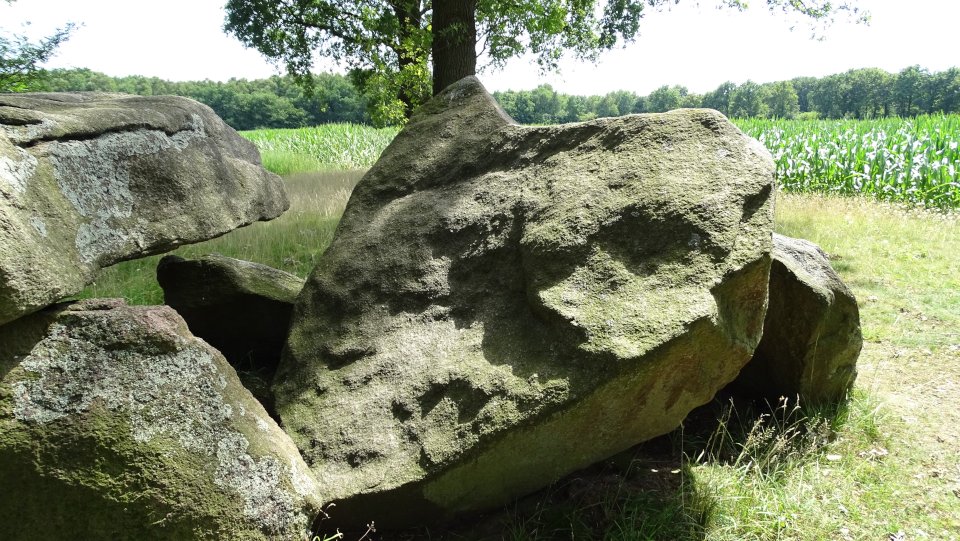
Visited July 2018







Hunebed D29 Buinen, with hunebed D28 just 37 metres north of it.

Hunebed D29 has two remarkably flat capstones that may have been fashioned from a single boulder.





Visited: May 3, 2011
Hunebed D29 Buinen stands just 37 metres south of its twin, D28, in the same wooded area. Measuring 7.5 × 3.1 metres, this passage grave consists of a full set of eight sidestones and two endstones and still possesses two of its original three capstones and a two stone entrance portal.
Interestingly, these capstones (one of which has slipped into the interior of the grave) are exceptionally flat, and some archaeologists consider that they were once part of the same erratic boulder. If this is the case, then the hunebed builders must have possessed advanced fission techniques in order to be able to cleave the boulder in two. How is unknown, but one suggestion is that the boulder could have been repeatedly heated by fire then cooled with water until it cracked in two; another is that wedges could have been driven into existing cracks. It is a fact that many of the hunebedden throughout Drenthe are built from stones with almost perfectly flat sides.